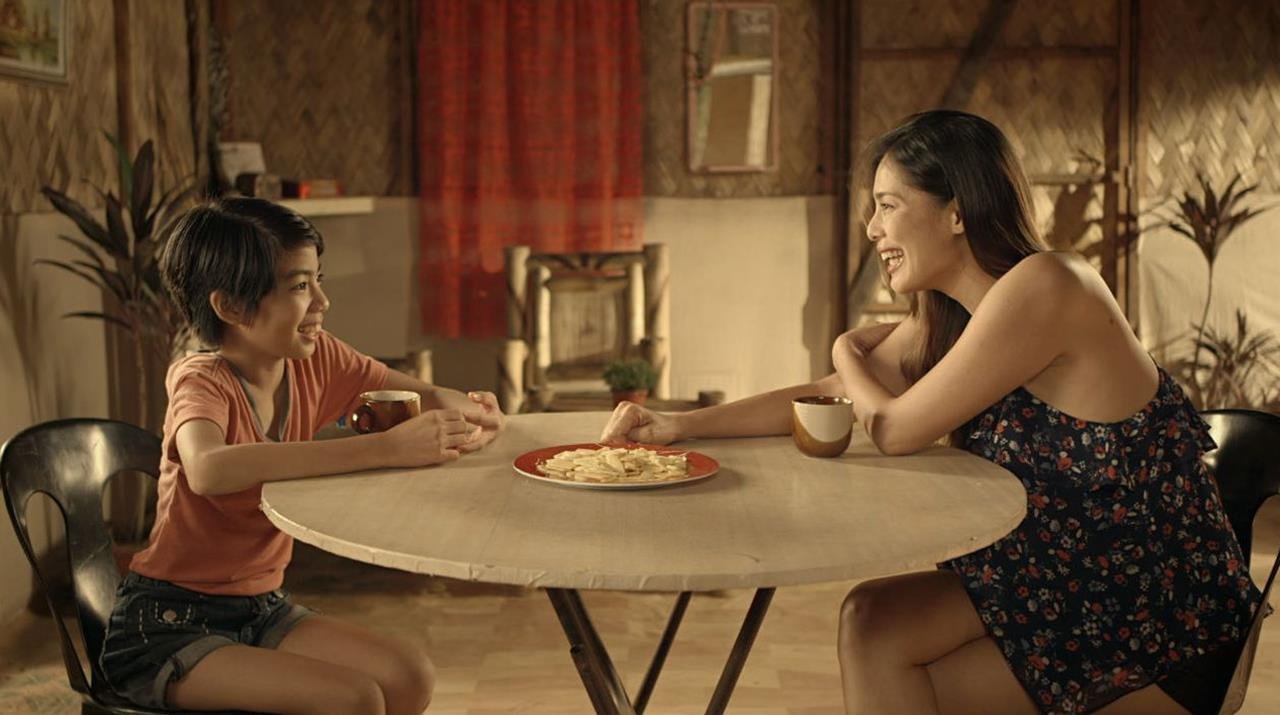I See Me... But Not Really
Part of our But Where Are You Really From? season.
“I want to go where culture is like New York. Or at least Connecticut or New Hampshire where writers live in the woods."
The moment I heard those words while watching Greta Gerwig's Lady Bird (2017), I immediately knew I was witnessing something that would tug on my 15-year-old self's heartstrings. One that I'd continue thinking about until I started to wonder a few years later about how much a film set in Sacramento, California, resonated with me, someone who lived in the Philippines for the entirety of her life.
One way to tell if someone is nearing their transitory years is by the media they want to consume. On my end, it was the thirst for reality and its exploration of adulthood. Quickly I went from eyeing the grandeur lives of Disney tales to wanting to see the gruesome process of puberty from the early 2000s coming-of-age films. At age thirteen, I desired to watch the awkwardness of first kisses and feel their need to fit in with the popular kids. Speaking as someone who was and still is an avid consumer of media, I found this shift significant. In some way or another, because everyone is a product of the things they watch. At least, that's what I thought.
Having grown up in a middle-class family in the Philippines, exposed to different cultures ranging from my classmates' stories to the provinces my family would travel to occasionally. However, it is essential to note that my country is a mix of many different cultures, considering we were colonies of Spain, China, and America. From the annual pancit, a dish made with noodles, served on birthdays because it's believed to bring good health and long life to the celebrant which we got from the Chinese to almost every Filipino inheriting a Spanish surname without having any Spanish blood. All of which are still prevalent today, especially America's contribution to the education system in the Philippines. However, easily recognizable is their pop culture and influence over Filipino audiences.
Seeing that Hollywood dominates the Philippine film market, our cinemas would usually be filled with blockbusters and the latest Oscar-nominated films. Eventually causing a ripple effect not only in the way we Filipinos consume our media but also in the process of adolescents figuring out their identity. Consistently consuming American pop culture, I would always find myself grasping at any form of universality, mainly because of the absence of hints of my own upbringing on screen, often leading to some confusion as to how things work, considering that the contexts of America and the Philippines are very much different. In the coming-of-age films I watched, such as Easy A (2010) and Superbad (2007), the leads were always keen on throwing a party when their parents were out of town. They were eager to lose their virginity because that was the mark of adulthood for them. Whenever I would talk about this to my peers, we all would nod our heads in agreement at the absurdity of having no adult supervision. Most of all, we would wonder if teenagers in America weighed their status on the social pyramid based on their ability to have sex, considering how taboo the topic is in the Philippines unless you're a married adult.
It wasn't until discovering Lady Bird (2017) that I felt somewhat represented on screen. For once in my life, I found myself agreeing to the complex personality and intricate life of Lady Bird McPherson because it seems to embody the angst and anxiety of being a teenage girl. The Academy Award-nominated film had a simple premise centered around a mother-daughter relationship, allowing viewers from various backgrounds to relate to their bond despite being set in California.
My teenage self revelled in the way Lady Bird carried herself. She is unapologetic and strong but still was able to show instances of self-doubt without having it diminish her sense of self. As I grew older, however, I've realized that while Gerwig could capture the nuances of what it was to be a young woman, I will never be a Lady Bird. I will never get what she means when she says she hates Sacramento. I won't understand what it was like to grow up in a middle-class family from California. And most of all, I cannot fathom the way she interacts with her elders because in the Philippines, talking back is immediately seen as disrespectful. Taking America's individualistic culture into consideration, I can see why talking back to your parents is seen as usual. I can never relate to the directness in Western culture because while Americans thrive in their independence, we Filipinos have great revere in our familial bonds. Not to say Western culture alienates their folks, but instead, Filipinos rarely think of family as something separate from themselves.
As I continue to see the differences between my context and Lady Bird's, the more curious I get if a coming-of-age film reflects my circumstance. A notable coming-of-age story that I've come across would be Sigrid Bernardo's 2013 film, Ang Huling Cha-Cha ni Anita (Anita's Last Cha-Cha). Set in Bulacan, a province in the Philippines, the film follows Anita as she develops a crush on this new woman named Pilar. Primarily the story revolves around Anita as she struggles to understand her newfound feelings as the Fiesta of Santa Clara approaches in her town Obando. The fiesta is commonly known as "Sayaw Sa Obando," and celebrates the promise of fertility to couples who long for a child. What struck me the most was the sense of familiarity I felt in seeing how the characters interacted. When Lolita, Anita's mom, was convincing her that she was joining that year's Sagala, a tradition where young women join a procession wearing long gowns, I, along with most Filipino girls, know that you don't have a choice. Seeing bits of how I interact and converse with people on screen invoked a particular fondness in me because it's always nice to see a reflection of your culture in film.
Although I was acquainted with the environment, I still couldn't help but feel disconnected. Even with the familiarity of the social norms in the film was comforting, the context was still different from what I knew. The film was set in the province having its own cultures and traditions, something I, who grew up in the city, will never fully understand the depths of the importance of their fiesta celebration.
Looking into this a bit more, I can't help but feel a pang of guilt, knowing in some ways I feel more at home in a piece of media set hundreds of miles away from home, rather than one a few cities away. On the other side of things, I'm self-aware enough to know that a single film can never really capture the complexities of one's life. However, films reflect culture, so there's a continuous search for identity for people like me who find themselves in the middle. Knowing full well that the way Lady Bird asked her mother when was a good time to be having sex would've ignited a lecture in a Filipino household. Or how acquainted Anita is with everyone in her town, something very foreign for someone who grew up in the city, leading me to gravitate towards narratives usually set in New York or California.
Despite all the nuances, knowing that a single film can never capture the totality of one's life is comforting. The universality of the film is what makes it still exciting to see. Discovering another person's culture and experience in life is the many pleasures of film viewing. However, this creates a more significant problem when young people struggle to find traces of their culture in the media they consume. Speaking as someone who does not fully see themselves on screen from the coming-of-age films mentioned above, there's a shame in admitting that I receive a greater comfort every time I see Lady Bird. As I mentioned earlier, Filipinos value their family, and the fact that Lady Bird resonates so much with me is her individuality. Lady Bird's real name is Christine. Choosing to be called by the former is her form of liberty. Distancing herself from her birth name is a way for Lady Bird to figure out who she is, something most teenagers go through at some point in their lives.
Perhaps this is another product of my country's colonial roots and how Western media is more familiar here. Seeing narratives unfold like Lady Bird's, feeling seen and considering to go that route for a bit yet ultimately backing down because of contextual differences. The most significant impact for Filipinos is that it's all just stories on a screen at the end. While they encapsulate experiences for Western audiences, it is a tale of 'what if' for those who are not. What if that was the case here in the Philippines? What if I did that? Those questions run through my brain, searching for ideas that may or may not help me find a more well-rounded sense of self.
Because of all this, there are still long ways to go for both parties in terms of representation. Especially for communities outside the Western sphere seeing that diversity in Hollywood is something the industry is still ushering towards. Hopefully, opening up opportunities for those stories to be heard on a grander scale, not just for diversity points but because these narratives can help shape culture or its lack thereof, primarily for non-western audiences. On the other hand, because of the dominance of Western media and the scarcity of hunger for Filipino media, the support for local films is still an ongoing project.
I still have a lot of uncertainties in finding places where I can fit whenever I watch something on the screen. The only thing I know for sure is that while Lady Bird (2017) and Anita's Last Cha-Cha (2013) were able to show the complex process of coming into terms of adulthood and how lonely the journey can be at times. Even with this common ground, I am neither a product of the two films because Lady Bird is not set in a city in the Philippines, nor is Anita's Last Cha-Cha. I hope that someday there will be a coming-of-age film solely for Filipino teenagers raised in a city. Because right now, I am somehow both in between and on the outskirts because I see myself but not really.
Pauline Sauz
Twitter: @pausauz
Instagram: @pausauz
This piece is a part of our But Where Are You Really From? season, made possible thanks to the BFI Audience Fund awarding funding from the National Lottery.



